CAFF
Type of resources
Available actions
Topics
Keywords
Contact for the resource
Provided by
Years
Formats
Representation types
Update frequencies
status
Scale
-
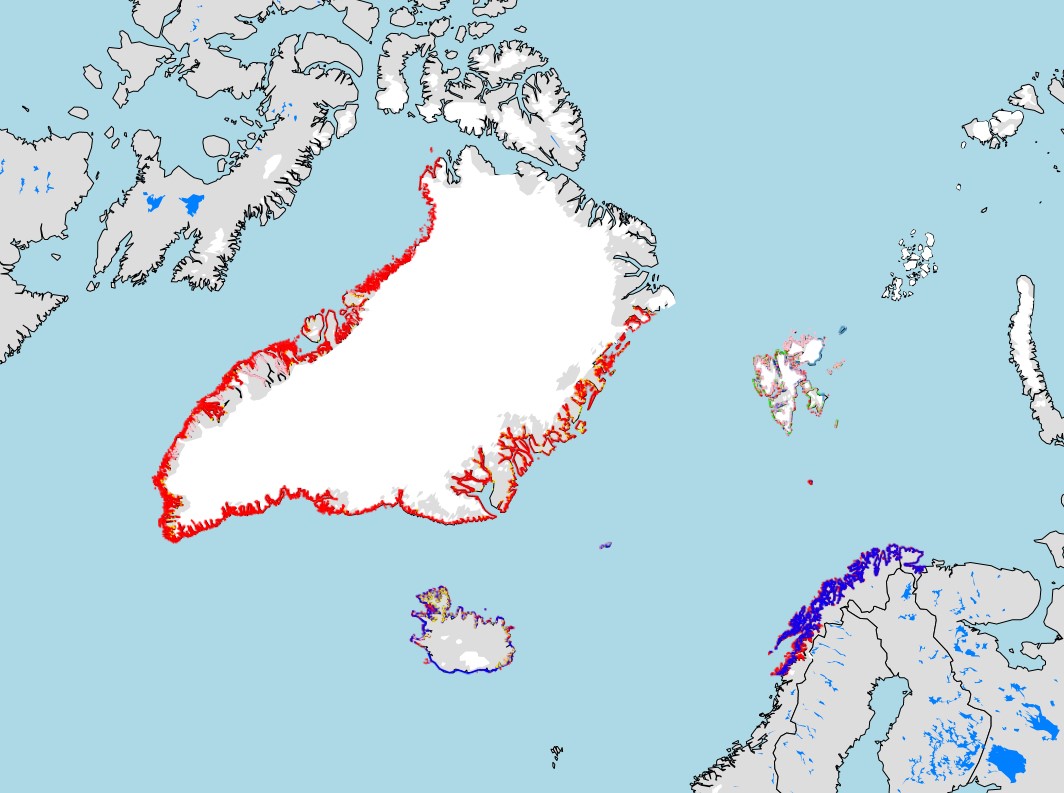
Standardized metadata template, for identifying knowledge locations on Arctic Coastal Ecosystems applicable for different knowledge systems. This template was developed by the Nordic Coastal Group, composed of the Nordic representatives on CBMP Coastal. The template is intended to identify locations for Indigenous Knowledge, Scientific, Hunters Knowledge, Local Knowledge, and community-based monitoring. The template is composed of two files a Word document that provides the rationale and detailed description for the Excel sheet that allows for standardized data gathering
-
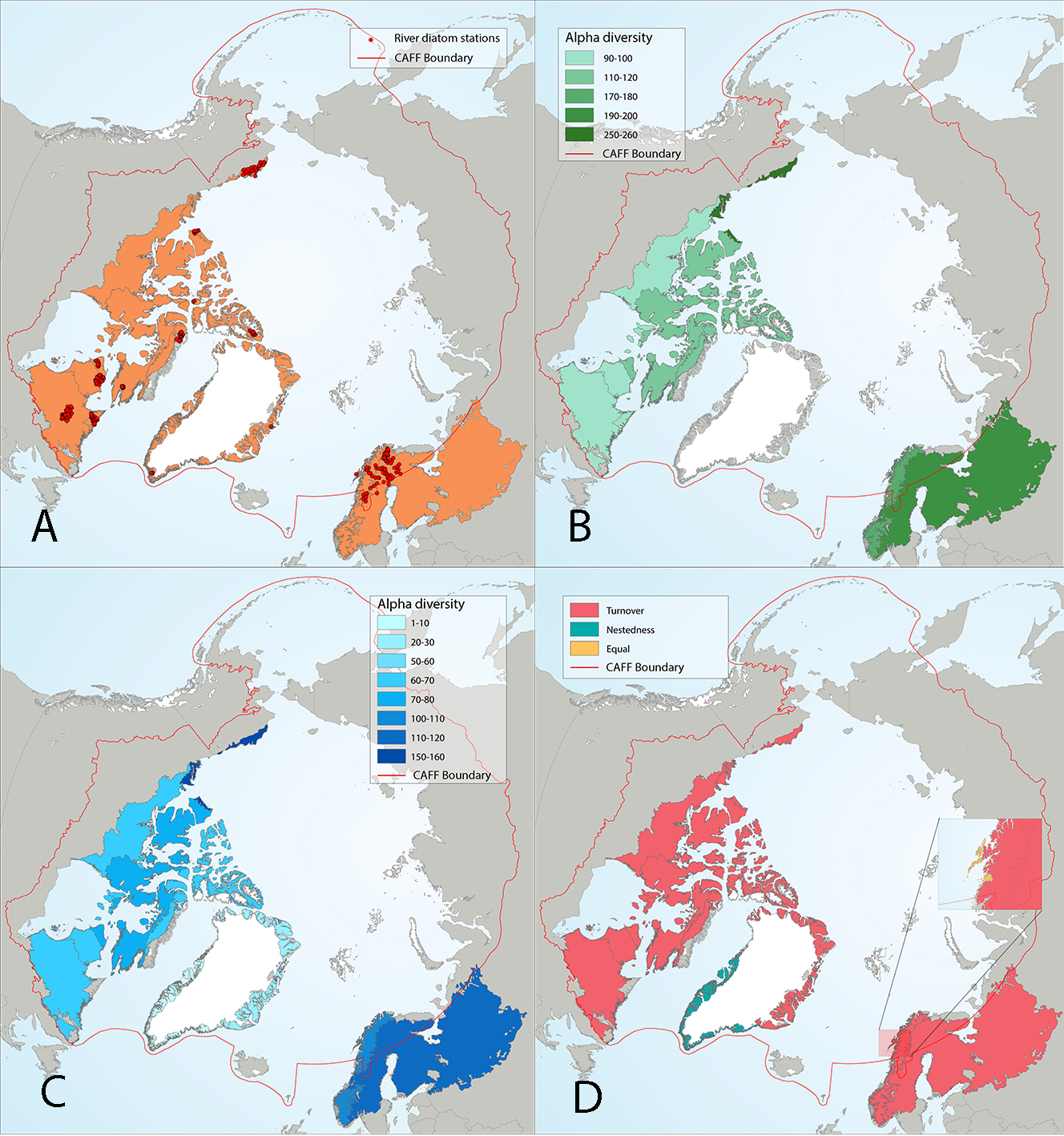
Results of circumpolar assessment of river diatoms, indicating (a) the location of river diatom stations, underlain by circumpolar ecoregions; (b) ecoregions with many river diatom stations, colored on the basis of alpha diversity rarefied to 40 stations; (c) all ecoregions with river diatom stations, colored on the basis of alpha diversity rarefied to 10 stations; (d) ecoregions with at least two stations in a hydrobasin, colored on the basis of the dominant component of beta diversity (species turnover, nestedness, approximately equal contribution, or no diversity) when averaged across hydrobasins in each ecoregion. State of the Arctic Freshwater Biodiversity Report - Chapter 4 - Page 36 - Figure 4-8
-
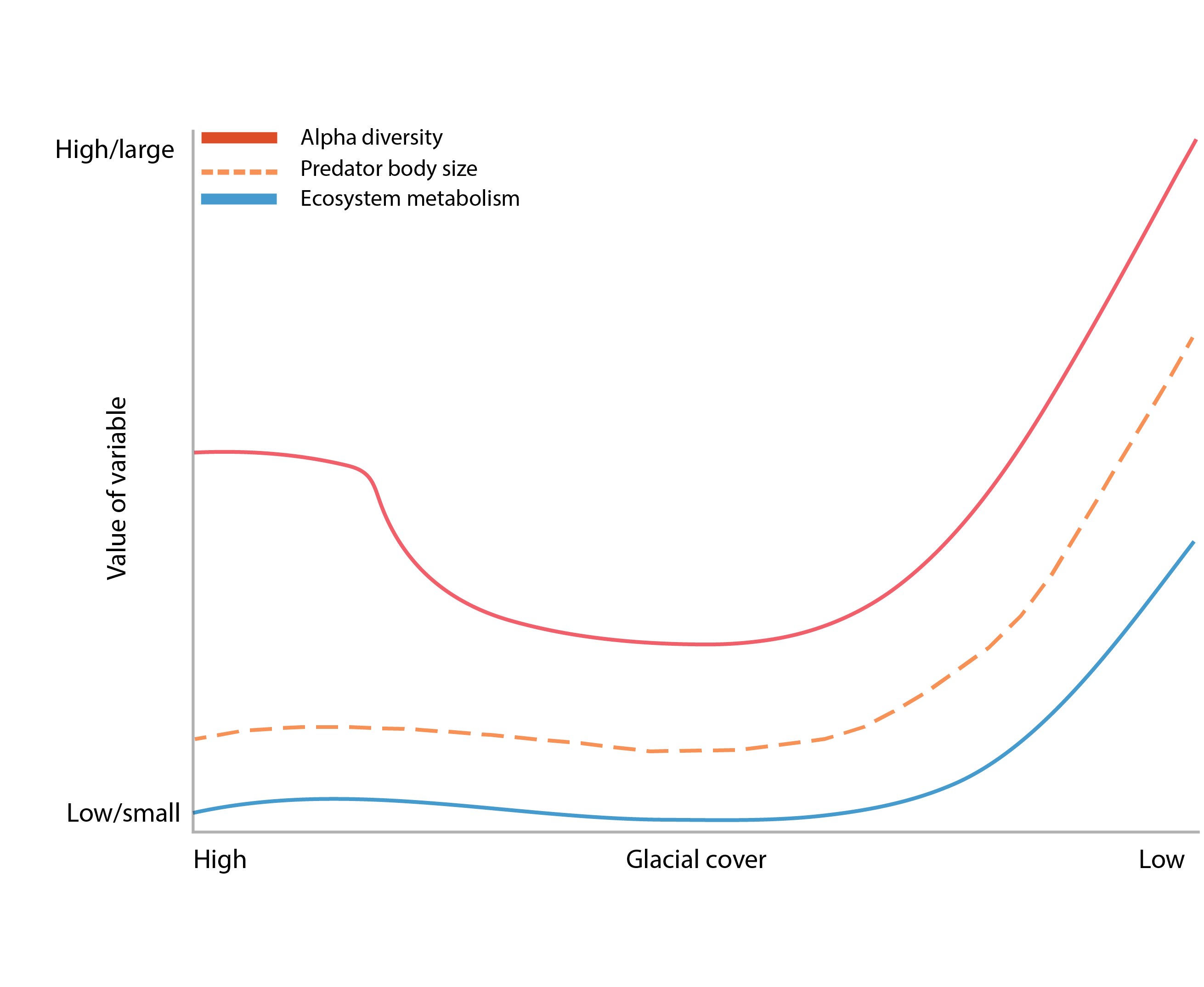
Figure 3-5 Changes in alpha diversity (red line), predator body size (blue dashed line), and ecosystem metabolism (blue solid line) with a shift in glacial cover from high (left) to low (right). Redrawn from Milner et al. (2017). State of the Arctic Freshwater Biodiversity Report - Chapter 3 - Page 22 - Figure 3-5
-
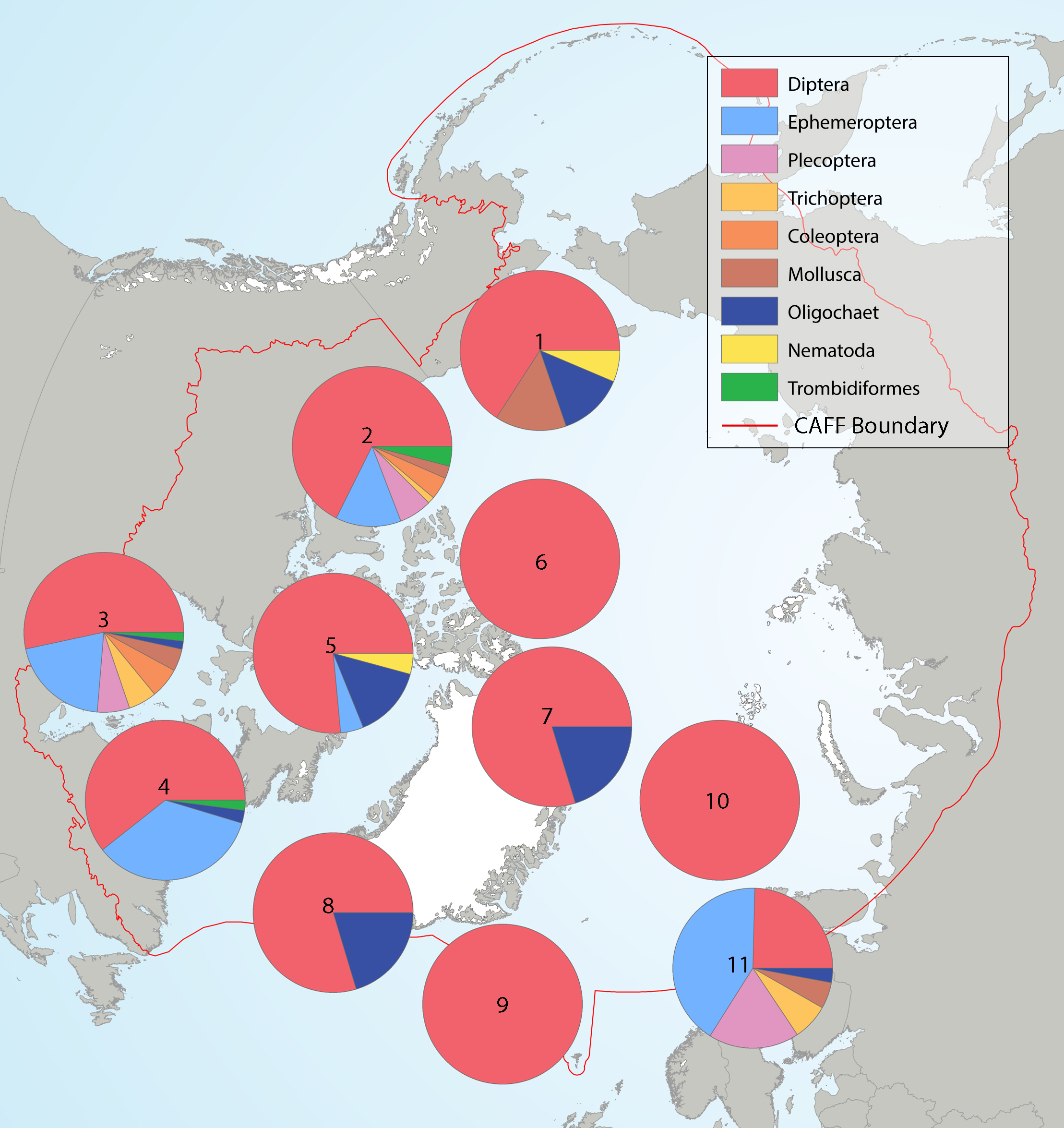
Summary of the taxa accounting for 85% of the river benthic macroinvertebrates collected in each of several highly-sampled geographic areas, with taxa grouped by order level or higher in pie charts placed spatially to indicate sampling area. Pie charts correspond to (1) Alaska, (2) western Canada, (3) southern Canada, south of Hudson Bay, (4) northern Labrador, (5) Baffin Island, (6) Ellesmere Island, (7) Greenland high Arctic, (8) Greenland low Arctic, (9) Iceland, (10) Svalbard, and (11) Fennoscandia. State of the Arctic Freshwater Biodiversity Report - Chapter 4 - Page 70 - Figure 4-34
-
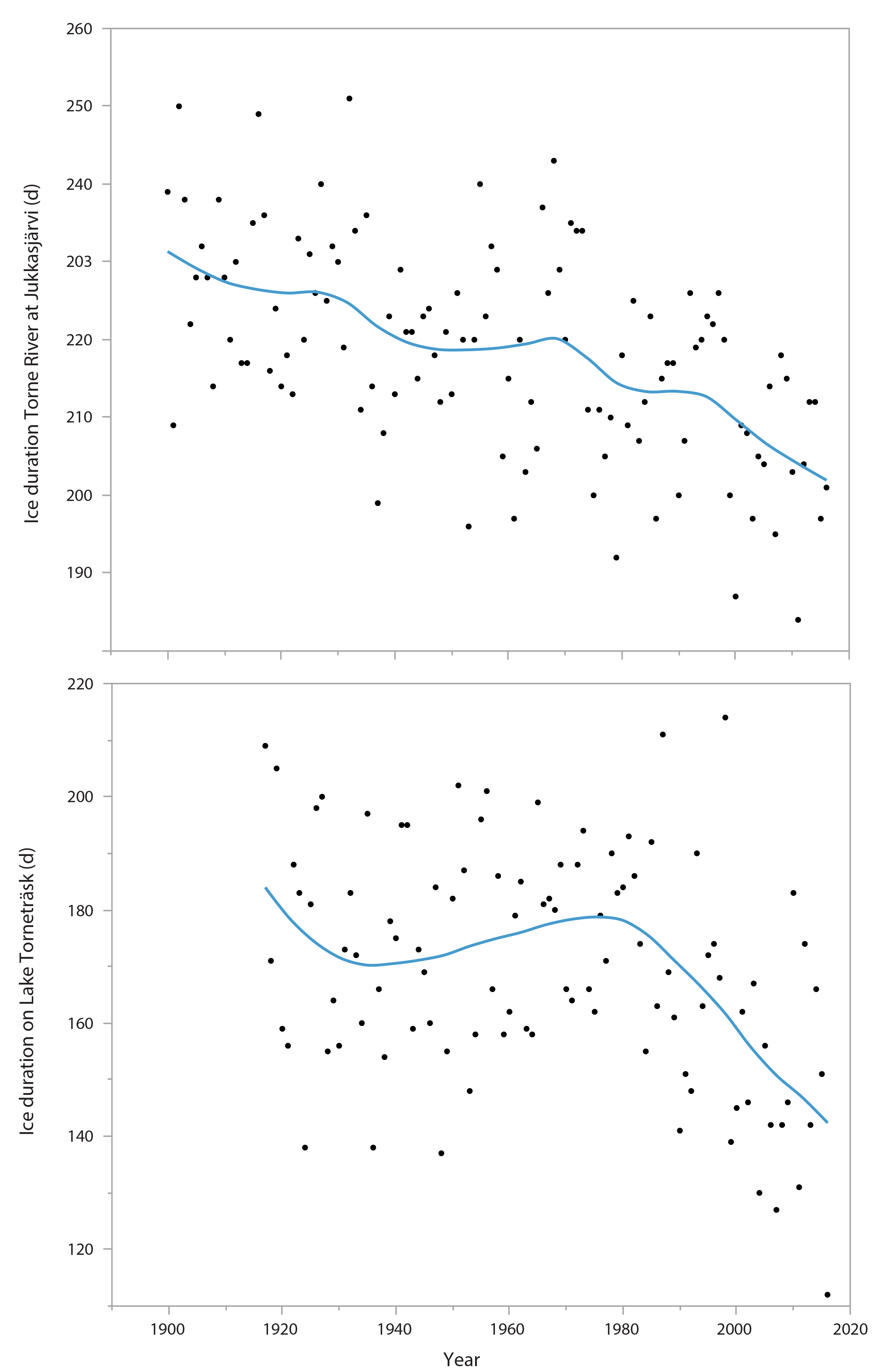
Figure 3-1 Long-term trends in ice duration (as days) in the River Torne (upper plot) and Lake Torneträsk (lower plot) at 68° north on the Scandinavian peninsula. Lines show smooth fit. Data source: Swedish Meteorological and Hydrological Institute. State of the Arctic Freshwater Biodiversity Report - Chapter 3 - Page 19 - Figure 3-1
-
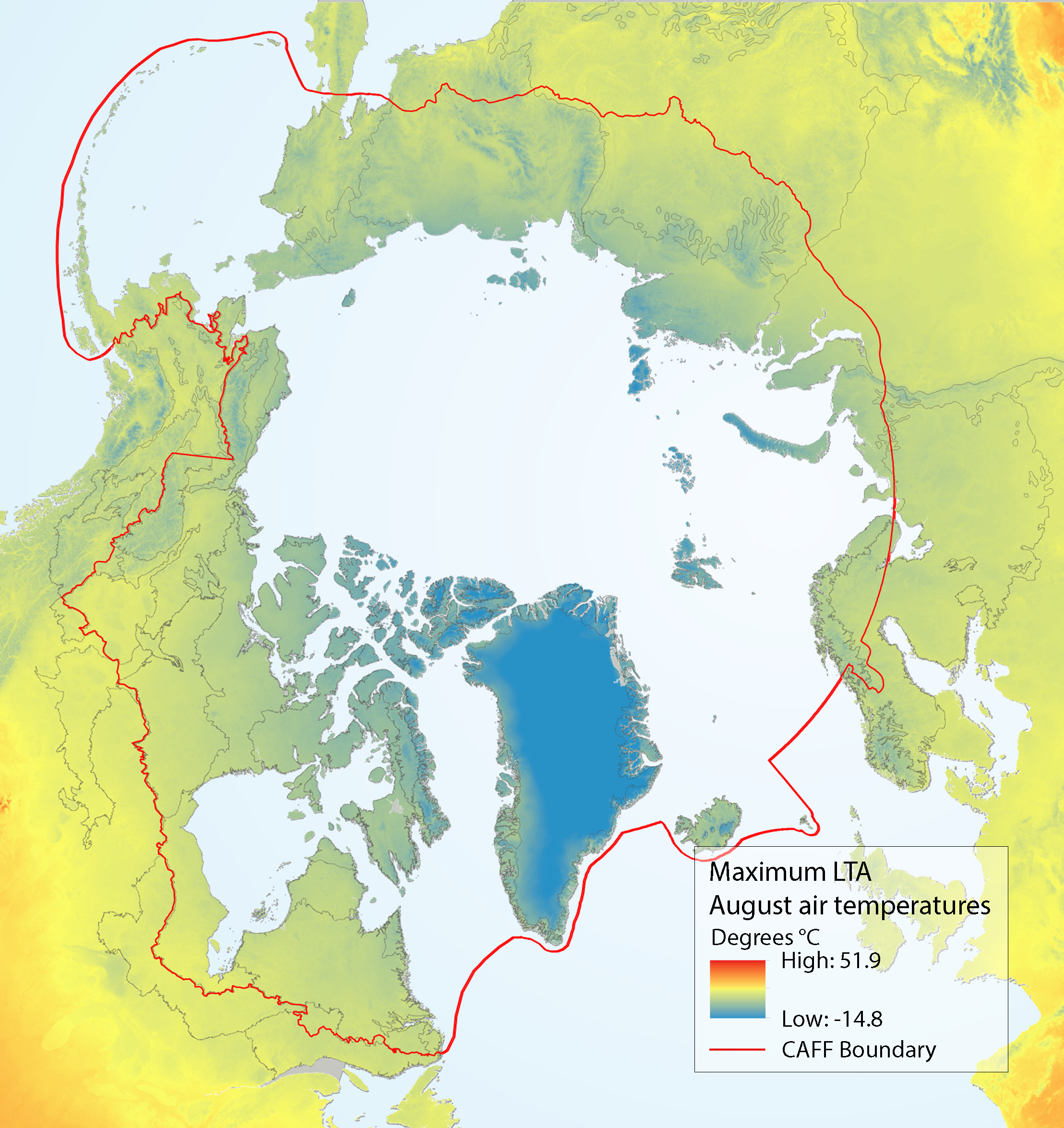
Maximum LTA (long-term average) August air temperatures for the circumpolar region, with ecoregions used in the analysis of the SAFBR outlined in black. Source for temperature layer: Fick and Hijmans (2017). State of the Arctic Freshwater Biodiversity Report - Chapter 5 - Page 89 - Figure 5-5
-

Box plot represents the homogeneity of assemblages in high Arctic (n=190), low Arctic (n=370) and sub-Arctic lakes (n=1151), i.e., the distance of individual lake phytoplankton assemblages to the group centroid in multivariate space. The mean distance to the centroid for each of the regions can be seen as an estimated of beta diversity, with increasing distance equating to greater differences among assemblages. State of the Arctic Freshwater Biodiversity Report - Chapter 4 - Page 48 - Figure 4-18
-

Abiotic drivers in North America, including (a) long-term average maximum August air temperature, (b) spatial distribution of ice sheets in the last glaciation of the North American Arctic region, and (c) geological setting of bedrock geology underlying North America. Panel (a) source Fick and Hijmans (2017). Panel (b) adapted from: Physical Geology by Steve Earle, freely available at http://open.bccampus.ca. Panel (c) source: Geogratis. State of the Arctic Freshwater Biodiversity Report - Chapter 5 - Page 86 - Figure 5-3
-
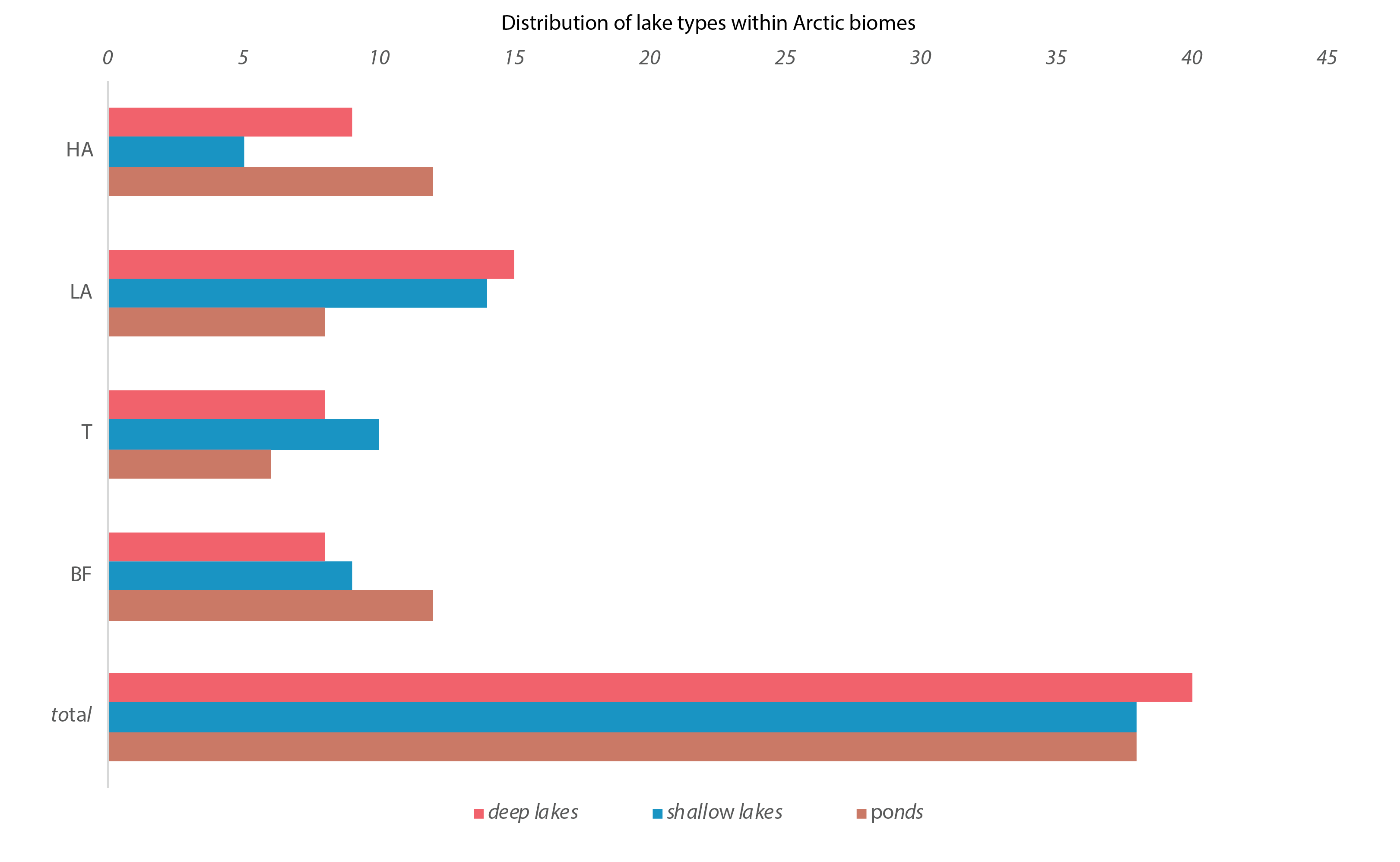
Figure 4-13 Number of deep lakes (red), shallow lakes (blue), and ponds (brown) in each geographical zone (BF, T, LA, HA). BF = Boreal Forest, T =Transition Zone, LA = Low Arctic, HA = High Arctic. State of the Arctic Freshwater Biodiversity Report - Chapter 4 - Page 40 - Figure 4-13
-
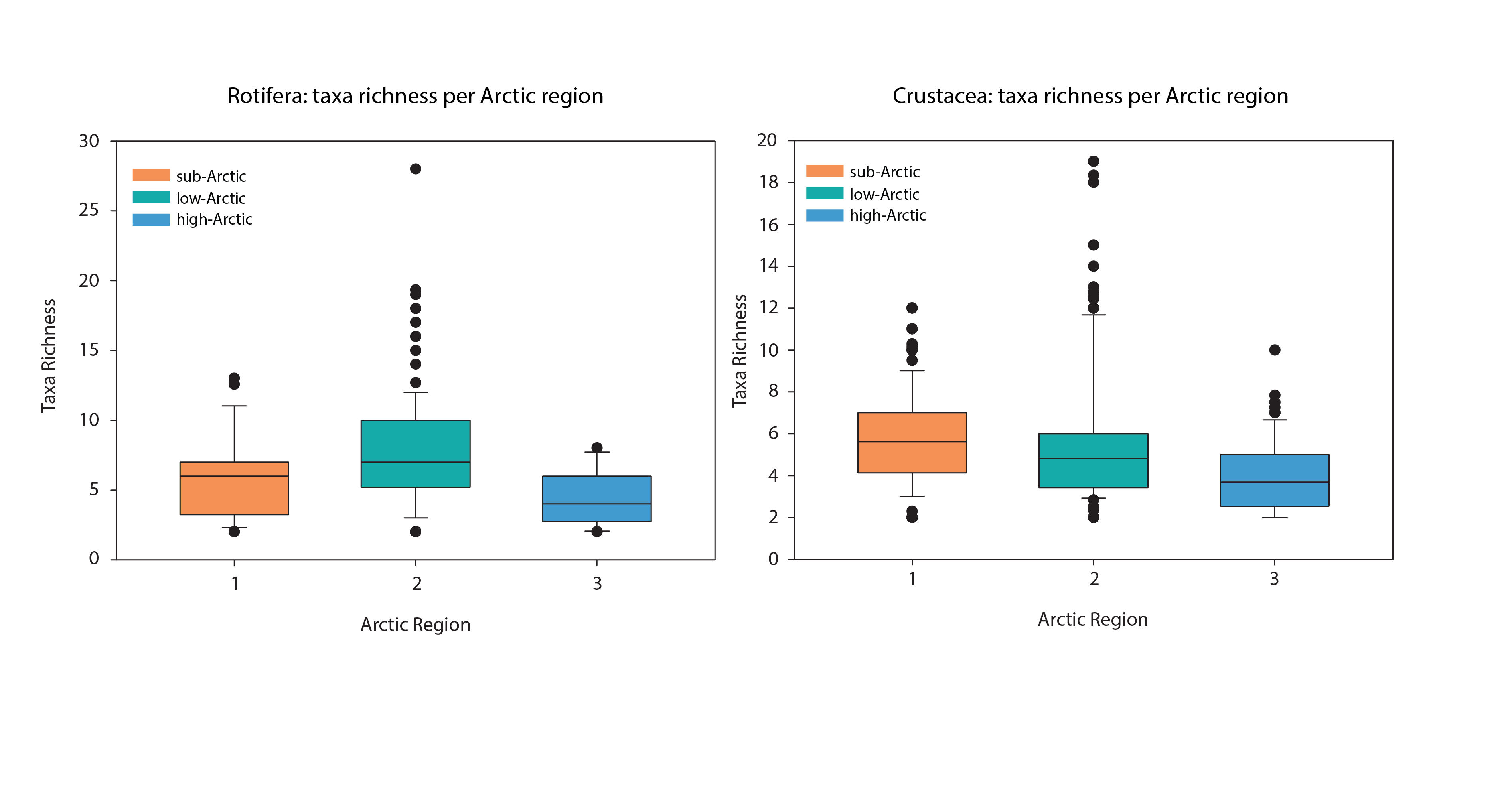
Box-plots of taxa richness (average per lake) by Arctic regions for rotifers (left) and crustaceans (right). Crustacean taxa are restricted to taxa within Calanoida, Cyclopoida and Cladocera. Samples with only a single taxon have been excluded. Boxes represent median and interquartile range. State of the Arctic Freshwater Biodiversity Report - Chapter 4 - Page 60 - Figure 4-27
 CAFF - Arctic Biodiversity Data Service (ABDS)
CAFF - Arctic Biodiversity Data Service (ABDS)